When Japanese artist Chiura Obata arrived in the United States in 1903, he brought an immigrant’s dream to make it in America. And, eventually, he did; Obata become an esteemed professor at the University of California, Berkeley, and created gorgeously rendered brush and ink portraits of his adopted homeland that place him firmly in the canon of great American landscape artists.
But the journey was not easy. Obata (1885-1975) was among the 120,000 to be imprisoned in squalid Japanese-American incarceration camps during World War II. The 11-month internment, surprisingly, did not dampen his love of America, but it changed the essence of his art.
The 150-work retrospective, “Chiura Obata: American Modern,” has made its final stop of an international tour at the Smithsonian American Art Museum with new pieces from the museum’s collections added, including the 1927 watercolor Carl Inn, depicting a tiny cabin nestled in a thick sequoia grove in Yosemite National Park—one of Obata’s favorite haunts.
In 1928, Obata embarked on a project with the Takamizawa Mokuhansha print workshop in Tokyo to recreate some of his watercolors, including Carl Inn, as woodblock prints. The team of 32 carvers and 40 printers managed by Obata, created some 130 proofs, experimenting with ink values, color gradation, light and dark. Many of the woodblock prints were lost or destroyed, as Obata sought to select just one to create his limited edition of 100 prints. But 15 are on display in the show. They are nothing like rough drafts. “Each one of these prints is a triumph, a masterpiece,” says Crawford Alexander Mann, III, the American Art Museum's curator of prints and drawings.
The prints also demonstrate Obata’s painstaking perfectionism and his signature style of blending American and Japanese traditions.
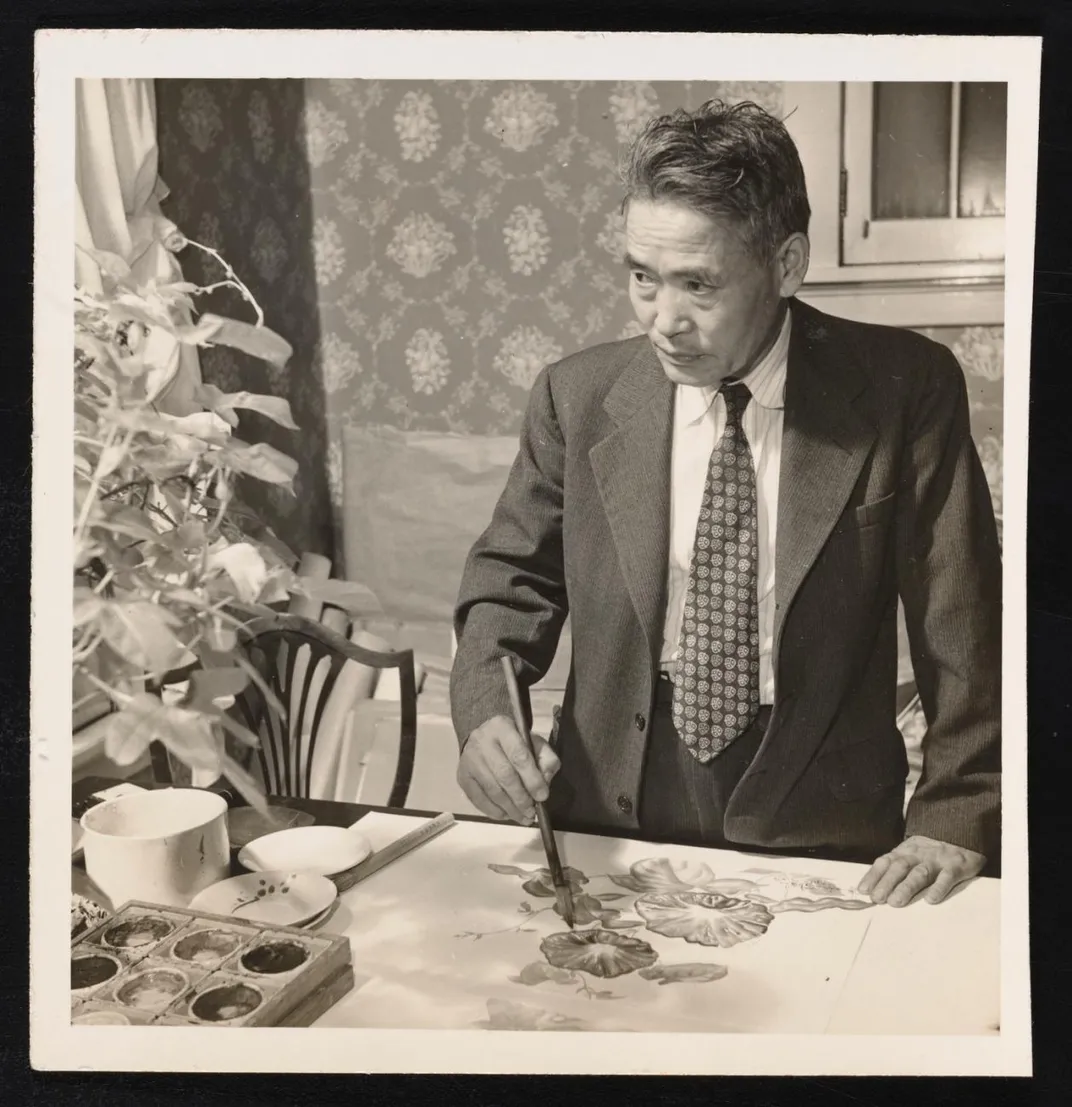
A Young Talent
Obata was a prodigy—exquisite color ink studies of purple blossoms and a lily stem, from roots to flower, from his 1890s grade school practice book is on display in the show. The Okayama, Japan, native may have come by his talents naturally. Obata’s father was a painter and drawing instructor at a local high school. Headstrong, the young Obata ran away from home to study art in Tokyo at age 14. By 17, the rising artist had won his first major award, and was being solicited to paint for magazines and books.
In Tokyo, Obata was trained in the classical method of sumi-e (meaning black ink painting), widely used in Japanese and Chinese art. Obata said in 1935 that black ink or sumi allows the expressions of elegance and life, which he called the “central aim of the Japanese and Chinese art.” Obata noted that the art form “gives us an elegance even in a drop or a brush of sumi by which an artist can express himself of things he happens to get in touch with.”
But Obata wanted to break out of what he felt was a constrained existence. He wanted to go to America, “to come in contact with a larger Great Nature,” said Obata when he was interviewed in 1965.
Chiura Obata: An American Modern
This catalogue is the first to survey Chiura Obata’s rich and varied body of work that includes over 100 beautiful images, many of which have never been published.
He immigrated to the U.S. in 1903, knowing no one and having no work. Obata found room and board as a domestic helper and began to learn English and to take art classes. Japanese newspapers hired him as an illustrator, and he painted many scenes of San Francisco, including many following the 1906 earthquake.
Though he fell in with other Japanese immigrants, he was not insulated from prejudice. One day in 1907 he was painting a streetscape and was jeered and spit on by a crew of construction workers. Obata decided to take them on. Ultimately, he was arrested for hitting one over the head with a piece of iron. But the judge declared him not guilty of attempted murder. The judge thought it wasn’t a fair fight. Obata was “facing eight guys who were all huge, whereas I was only 135 pound, five feet four inch and a half and occupation painter,” recounted Obata.
Obata began meeting other Japanese-American artists and also found greater success as an illustrator for Japanese publications and companies. In 1909, when he was 24, Gumps hired him to create murals throughout the landmark San Francisco department store.
He founded the East West Art Society in 1921 to trade ideas and organize exhibitions, and “to promote the idea that San Francisco and the arts community there would have something to offer to the rest of the nation and the world through this intersection of artists and visual languages and backgrounds and traditions,” says Mann.
Throughout his career, Obata showcased his mastery of traditional Japanese subjects, such as the deftly-inked 1930s still-lifes of Ikebana flower arrangements on display in the exhibition. His wife, Haruko, was a gifted arranger and author of a 1940 handbook on the art—illustrated, of course, by her husband.
There is no doubting Obata’s sumi-e skills in the 1930s animal series in the exhibition. Untitled (Ibex) is a study of grace and motion. The two leaping animals seem both earthly and ethereal.
Great Nature
But it was landscape that fascinated Obata and is also his greatest legacy, says Mann.
His love of the Sierra Nevadas was first kindled during a six-week visit to Yosemite in 1927, during which Obata created some 150 watercolor sketches. “This experience was the greatest harvest for my whole life and future in painting,” Obata later told the Japanese reporter. He venerated the area so much that he incorporated water from the lakes and streams into his paint pigments.
In 1928, when his father died, Obata returned to Japan and embarked on the project that established him as a modernist and brilliant artist, says Mann. Obata said he took his sketches to the Japanese print makers because he “wanted to preserve this art and I thought it was a good idea to reproduce the impression I had of the High Sierra into woodblock prints.”
The fruits of Obata’s passion can be seen in the 1930 masterwork Lake Basin in the High Sierra, the first print to be completed. Obata described his experience of being at the lake—perched at the foot of Johnson Peak—as near-mystical. He said he heard music that “sounded like the wind and it didn’t sound like the wind” while “the heart of the lake was still.”
The print is photographic in evoking the landscape but it is not flat; it draws the viewer in to experience the setting as Obata did.
Evening Glow at Mono Lake, from Mono Mills (1930) has a similar quality. It’s impossible to believe it’s a woodblock print. Obata described being at the lake to his wife: “A mysterious feeling overwhelmed us. It was beyond description.”
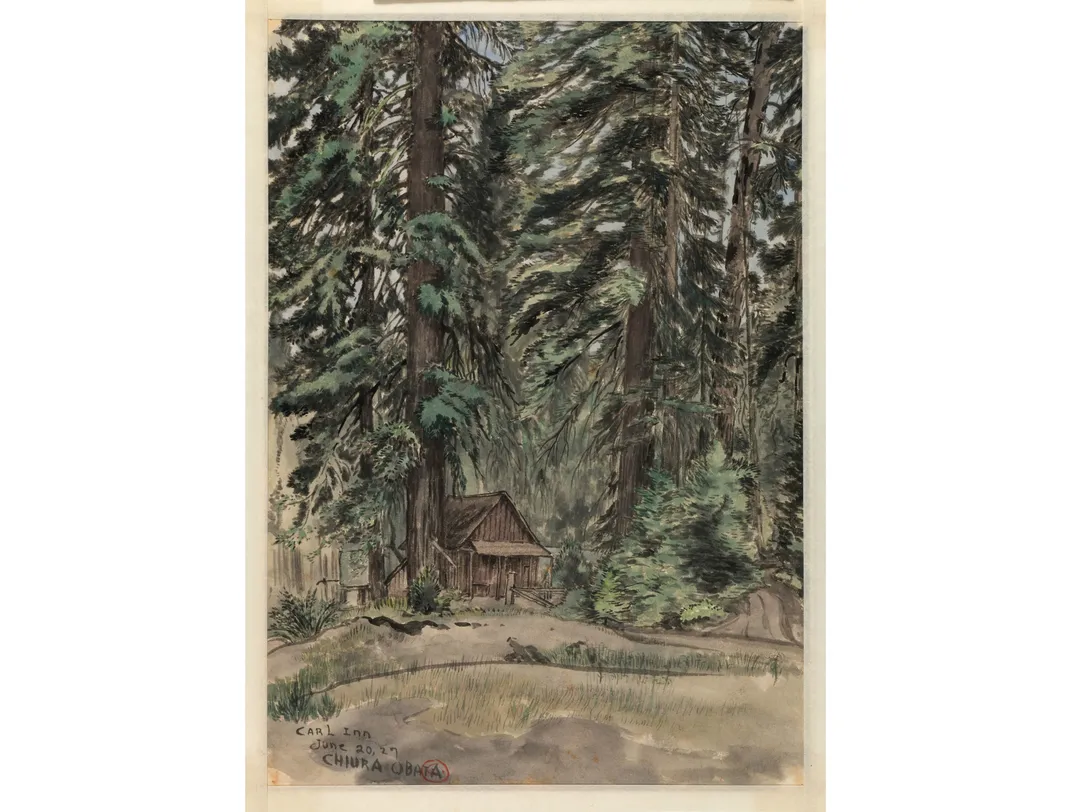
From Berkeley to Topaz
Obata’s landscapes soon drew him many fans—in Japan, and in the Bay Area, where he had solo exhibitions at the California Palace of the Legion of Honor, and at Berkeley. The university asked him in 1932 to give lectures, making him one of the first Asian-American artists to teach there, says Mann. He taught sumi-e and painting on silk, and eventually instructed some 10,000 students over a two-decade career.
It was not just about mastering a brush stroke. “I always teach my students beauty,” said Obata in the late 1930s. “No one should pass through four years of college without being given the knowledge of beauty and the eyes with which to see it.”
Obata was finally where he had dreamed of being: a professional artist, sharing his love of craft and beauty with others. But World War II delivered a rude awakening. After the Japanese bombed Pearl Harbor, Obata and his family—like thousands of other Japanese—were rounded up and sent off to internment camps.
On April 30, 1942, Obata, his wife and three of his four children (one son escaped by transferring from UC Berkeley to Washington University in St. Louis), were sent to live in the stables at the Tanforan Racetrack in San Bruno, California, where some 8,000 Japanese were being forcibly held. Obata and his family were forced to give up an art store and studio they owned in Berkeley, an art store in Oakland, and all of their belongings except what they could pack in a suitcase.
He wanted to do something to show that while humiliated, he and his countrymen were not emotionally defeated. Within a month, Obata got permission to open an art school at the prison camp.
Obata and his family were soon moved to the Topaz War Relocation Center on a forlorn dusty piece of land in central Utah. He brought the art school with him and later said that during his 11 months in the camps he made some 350 paintings. Many, such as Examination Time, depicting newcomers herded into a room to be checked over, showed the daily drudgery and humiliations endured by the prisoners.
At Topaz, for an unknown reason, Obata was attacked by another camp resident and needed to be hospitalized. The April 4, 1943 sketch At Topaz Hospital, depicts what looks like a typical American hospital ward, complete with a Life magazine laid out on a bed. Was this a message? Maybe that internees were no different than Americans?
Some of the prison-era works reflected Obata’s undaunted love of landscape. In Topaz War Relocation Center by Moonlight (1943), the moon—hanging in a melancholy gray-blue sky—casts its light over a handful of low barracks buildings.
The paintings at Tanforan and Topaz were “my way of showing my gratitude to nature,” and a way of keeping himself grounded in hope, Obata said in the 1965 interview. “If I hadn’t gone to that kind of place I wouldn’t have realized the beauty that exists in that enormous bleakness,” he said.
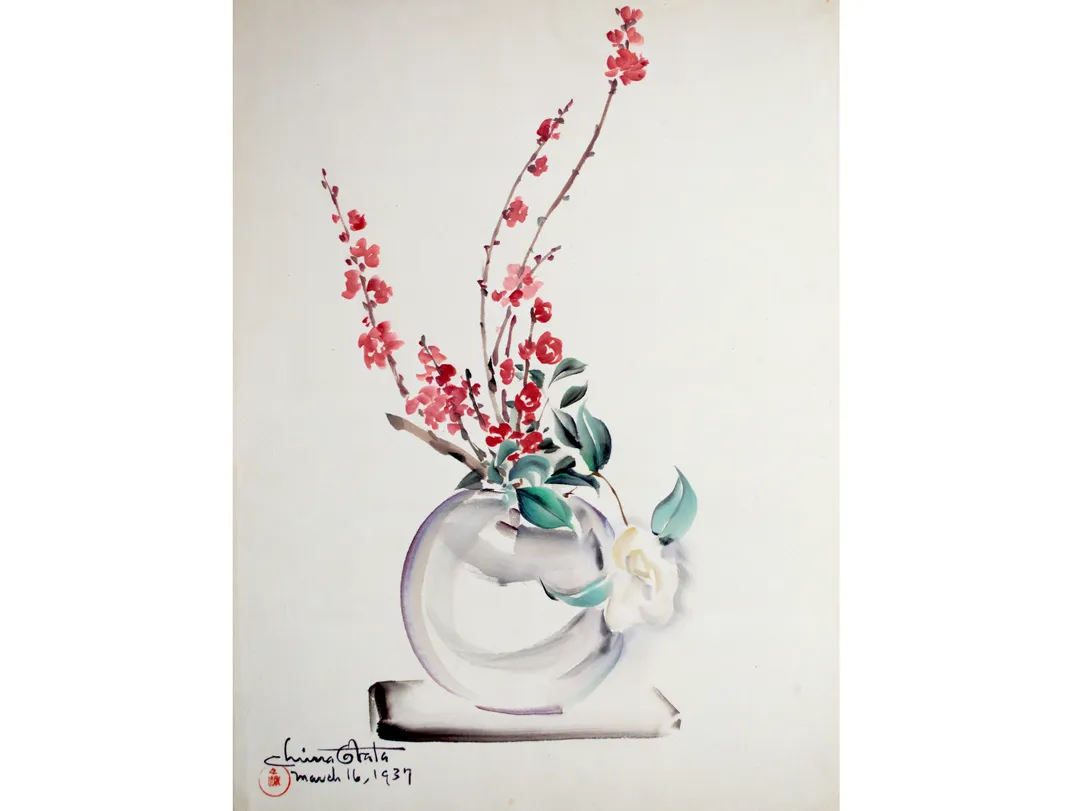
Internment Leaves a Mark
The prison attack served as Obata’s gateway out—allowing him to petition for early release, which he received a month later. Because the Bay Area was still hostile to Japanese, the family moved in with Obata’s son in St. Louis.
It was a relief. The sentiment was reflected in the pastoral Webster Groves, Missouri (1943) of two figures sitting in Adirondack chairs on a grassy lawn, facing a neat, white wood-sided house set among Mimosa trees and ferns.
Obata was reinstated by Berkeley in 1945. A period of reconnecting with nature and sharing his joy of beauty and art with students followed.
He also led dozens of post-War cultural tours to Japan. Obata always took his tour participants to the Hiroshima Peace Memorial Museum, which displays artifacts and photos documenting the August 1945 American atomic bomb attack that killed 100,000. To him, the resilience seen among the burn victims in the photographs spoke to the power of love. “Even the atomic bomb cannot beat them,” Obata said.
The bombing shook him. Just a day after the attack, Obata conceived a trio of paintings. Devastation (1945) shows two figures in the center of a bleak swirl of browns and blacks; it looks like a flattened mushroom cloud. In Prayer (1946), a blackened figure wearing a red cape leans on a walking stick, in a black and brown landscape devoid of flora, fauna or structures. In Harmony (1946), a patch of green grass grows amidst the blackened ground, while two figures, outside a patched shack, appear to be bowing towards the new life.
The war and internment were never far from his mind, and likely changed his art forever, says Mann. “When I look at his work after he was in the camps, after World War II, I see a lot more emotion,” he says, adding that Obata’s later pieces are more directly symbolic.
Beauty of Struggle (1953), a breathtaking four-panel screen measuring six-by-eight feet, is most evocative of Obata’s fusion of self with nature. The oil and gilding on silk depicts a gnarled cypress growing out of a pile of rocks. It is heavily Asian-inflected, but also a realistically modern American landscape.
“I have been working towards this painting in the past forty years,” said Obata, in a 1953 letter about the screen. The painting is of Obata’s impression of the land between Carmel and Point Lobos in California, where, he wrote, “windblown, aged cypress [trees] stand among moss-covered rocks throughout pure white sand dunes [that] meet [the] deep blue Pacific Ocean.”
The screen shows Obata “thinking very directly about the hardships of his life…and about how art-making has helped him get through all those experiences,” said Mann.
Obata continued at Berkeley until 1954 when he retired as professor emeritus. It was the same year that he became a U.S. citizen. His many years in America taught him much about the country. “It goes without saying that America is very rich in natural resources,” said Obata in 1965. “In other words, natural blessings.”
“In many ways America is largely wasting what nature is providing us,” he said. By being more aware, “America has the potential to grow further in the future, and America will become a good nation with true leadership in the world.”
Currently, to support the effort to contain the spread of COVID-19, all Smithsonian museums in Washington, D.C. and in New York City, as well as the National Zoo, are temporarily closed. Check listings for updates.“Chiura Obata: American Modern,” curated by ShiPu Wang, was scheduled to remain on view through May 25, 2020 at the Smithsonian American Art Museum.
A Note to our Readers
Smithsonian magazine participates in affiliate link advertising programs. If you purchase an item through these links, we receive a commission.
/https://tf-cmsv2-smithsonianmag-media.s3.amazonaws.com/filer/ef/6c/ef6cb9e0-8e6e-41d4-bd71-b50a0fb3e419/chiura-obata-great-nature-storm-on-mount-lyell-from-johnson-peak-mobile.jpg)
/https://tf-cmsv2-smithsonianmag-media.s3.amazonaws.com/filer/f2/b2/f2b26ae1-e0c5-45e5-9c5e-03c2d3481b98/chiura-obata-great-nature-storm-on-mount-lyell-from-johnson-peak_longform.jpg)
/https://tf-cmsv2-smithsonianmag-media.s3.amazonaws.com/accounts/headshot/AliciaAult_1.png)
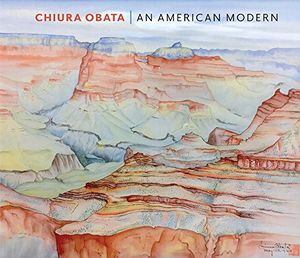
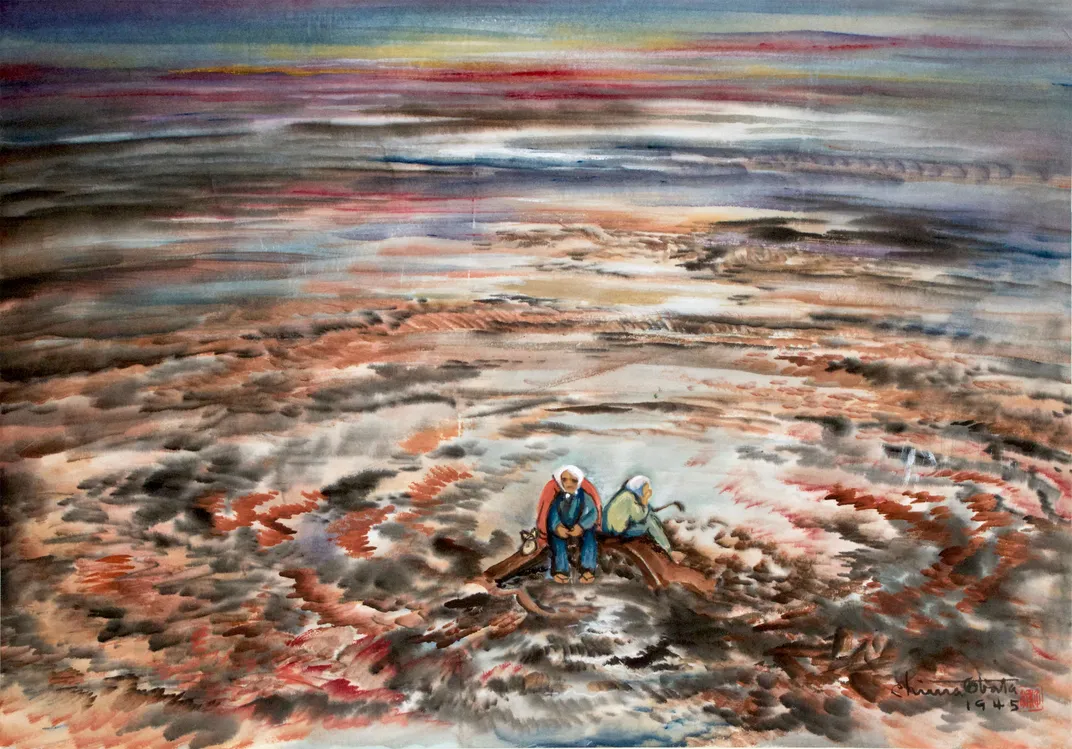
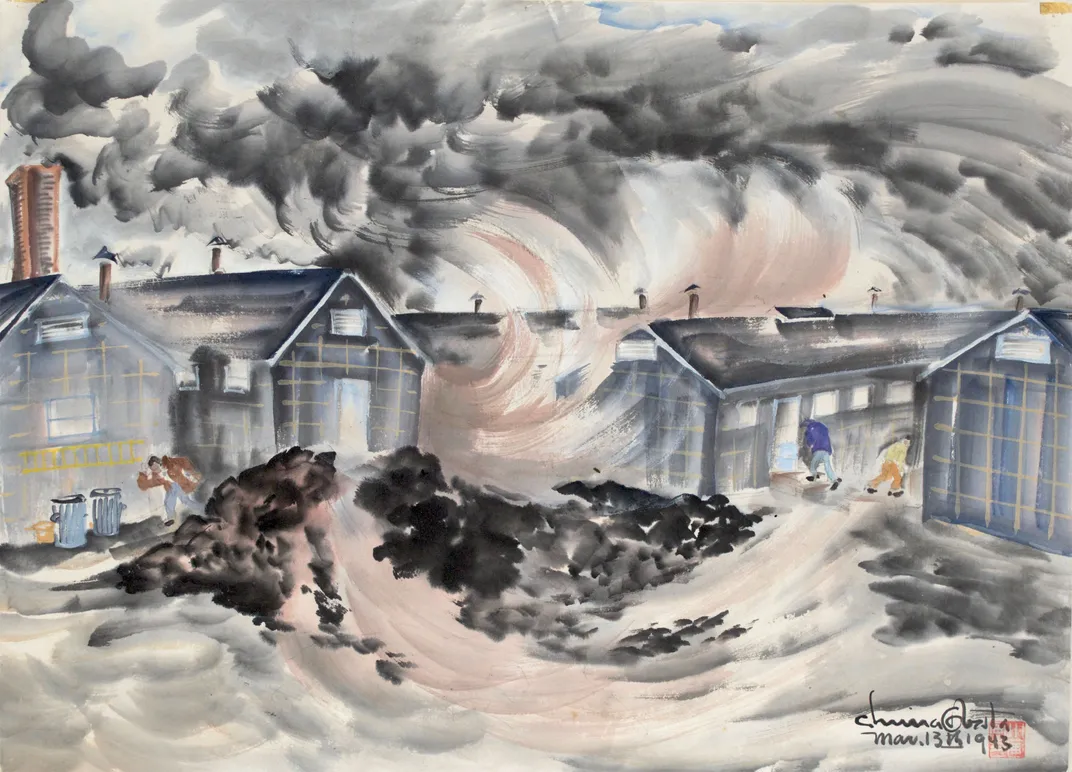
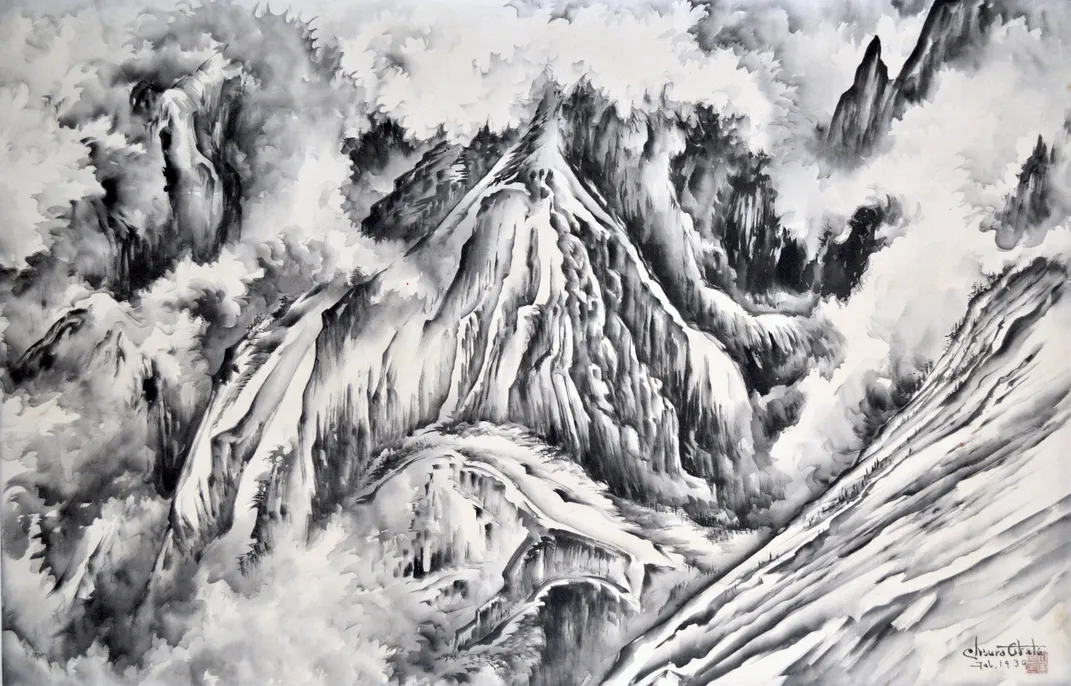
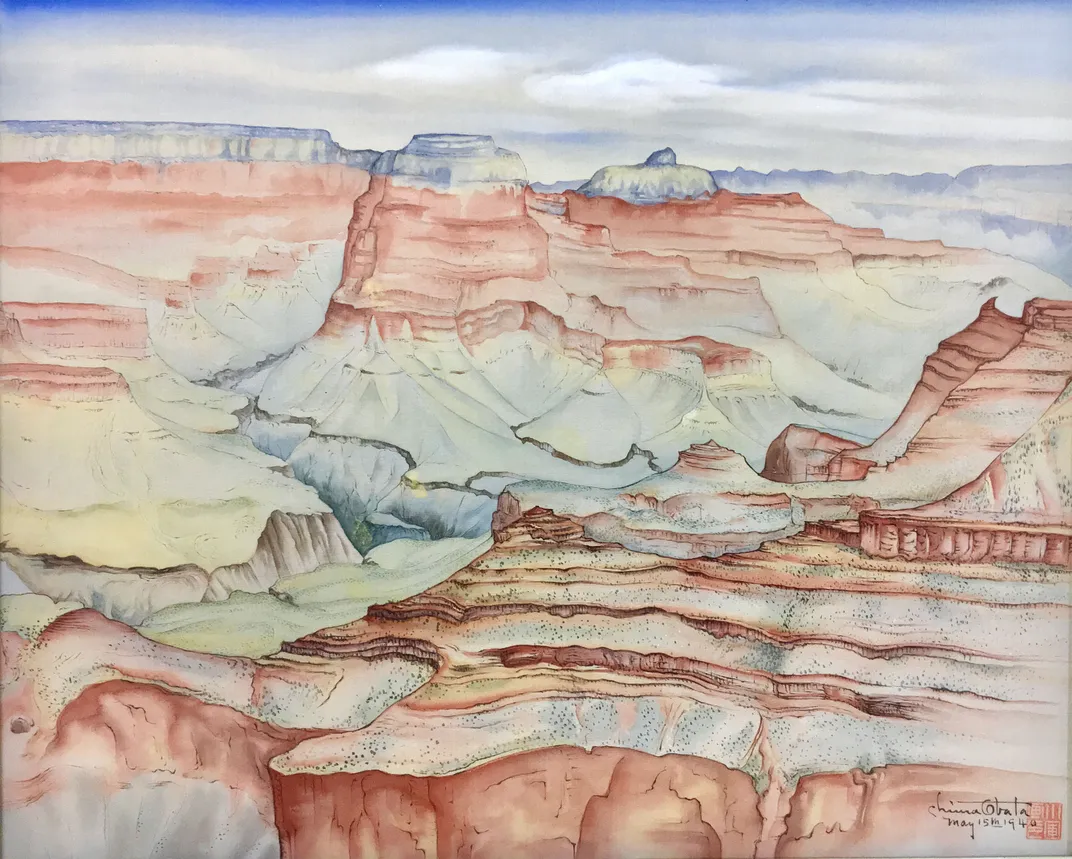
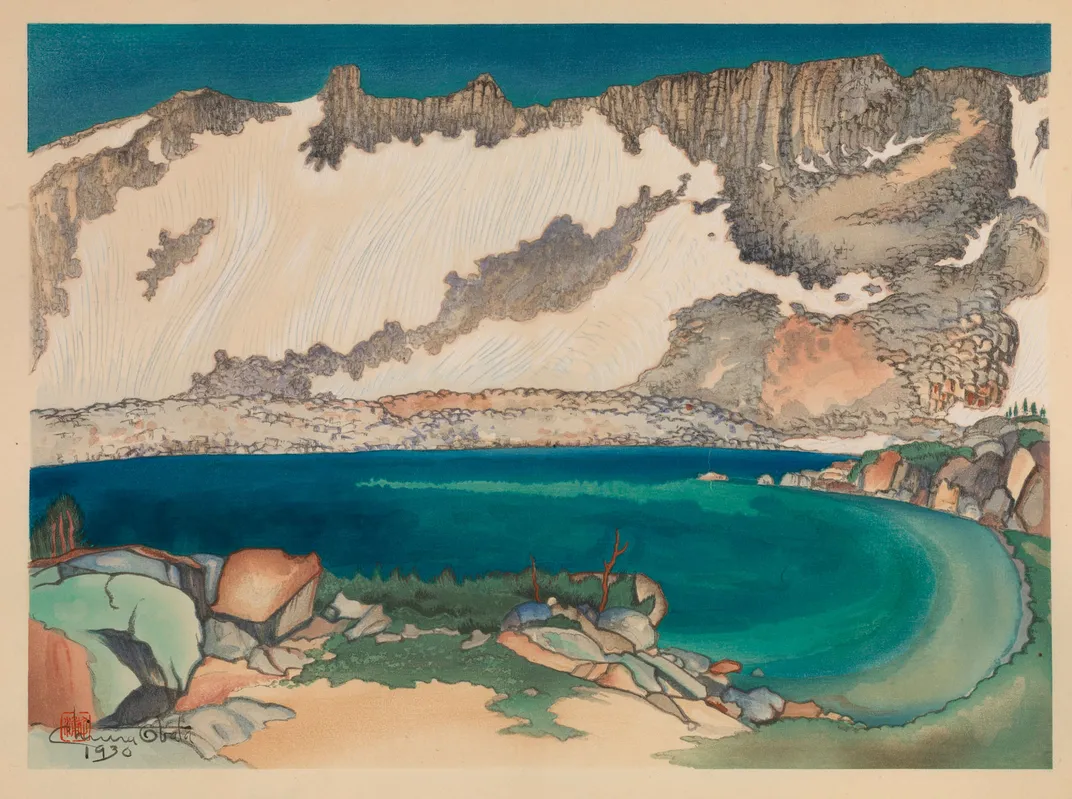
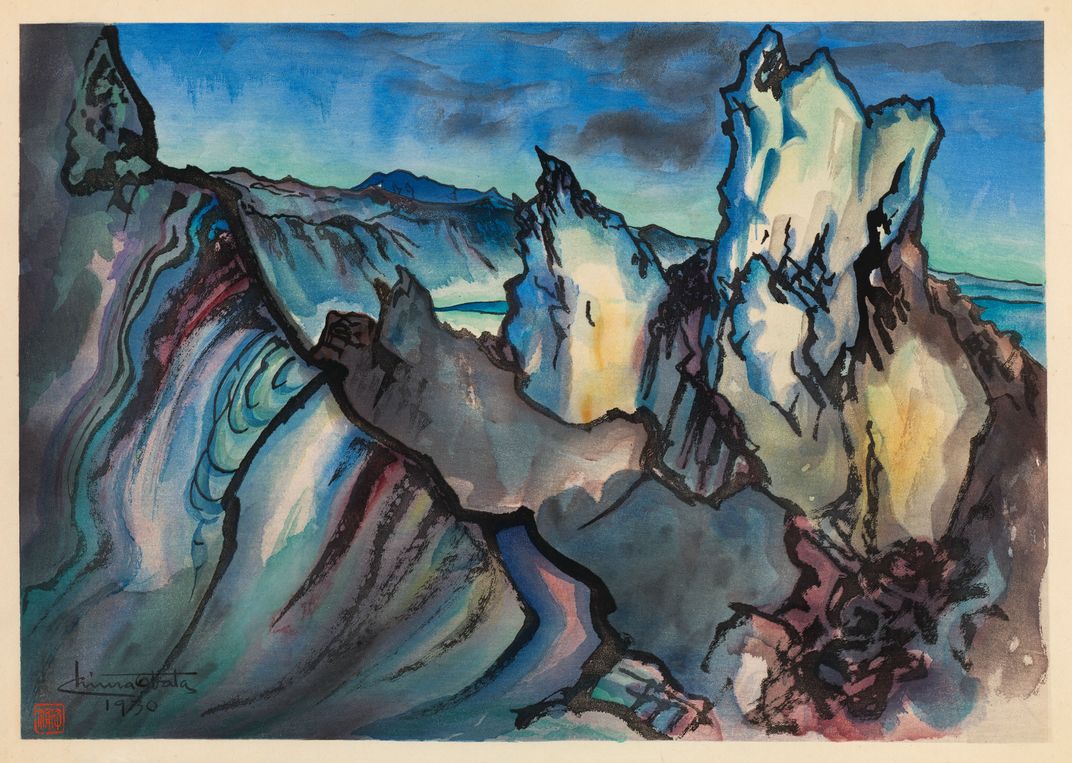


/https://tf-cmsv2-smithsonianmag-media.s3.amazonaws.com/accounts/headshot/AliciaAult_1.png)